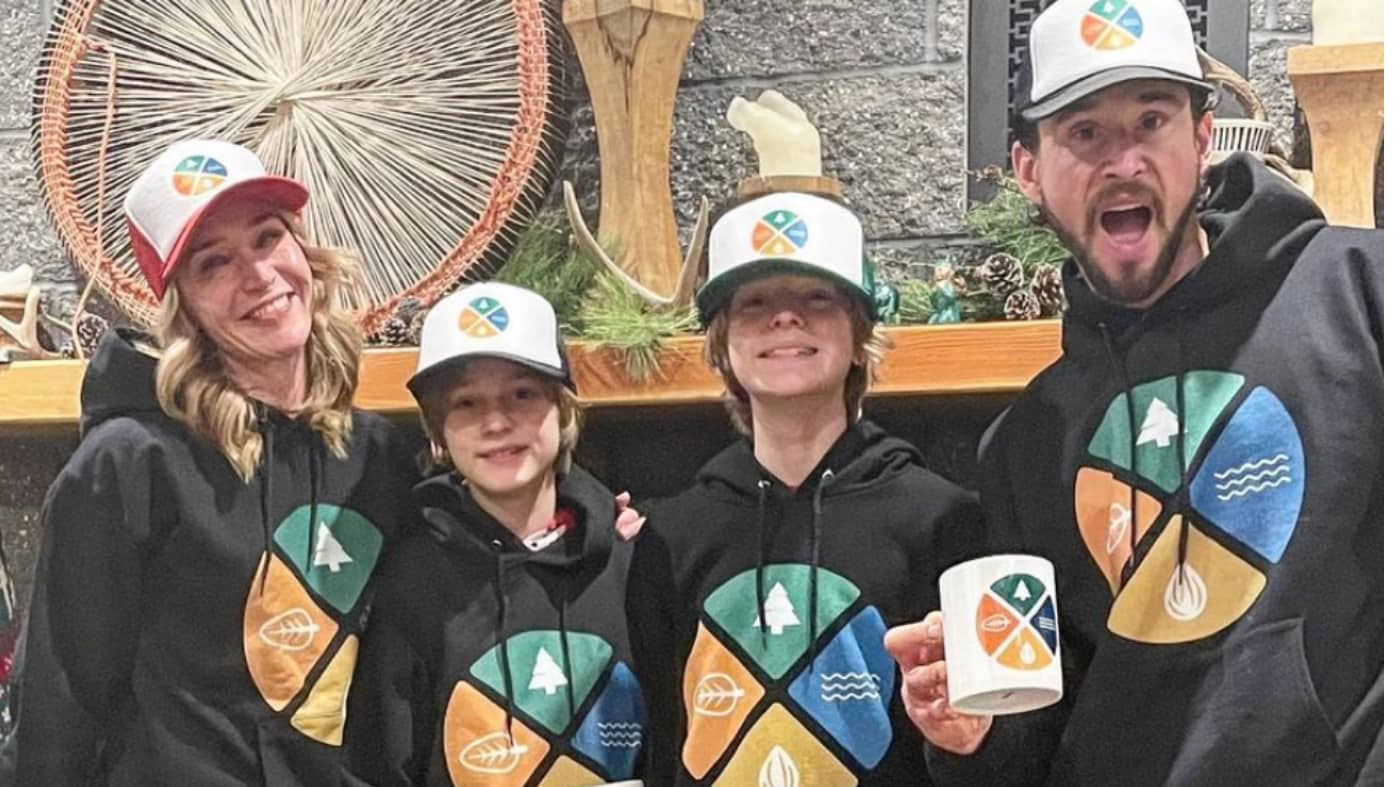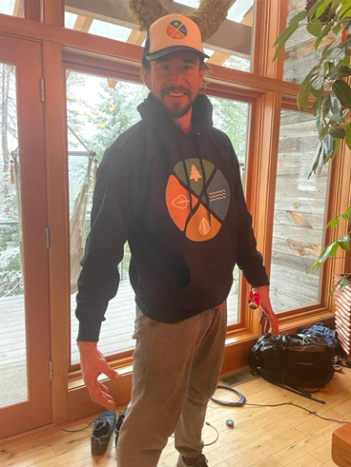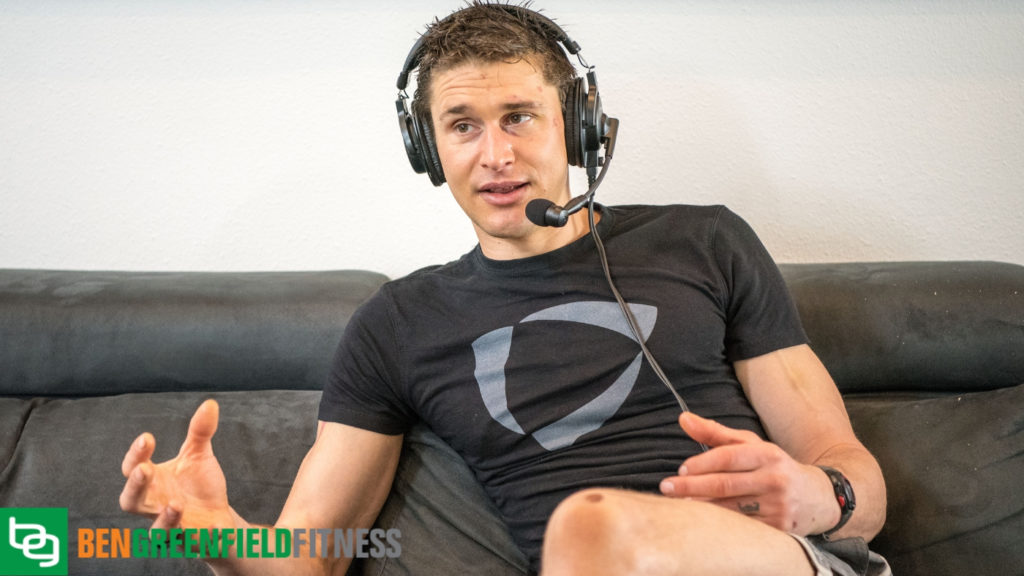February 1, 2022
I think it was Gary Vanyerchuk who I first heard quip that…
…”Legacy is greater than currency.”
While I believe Gary was generally referring to the fact that when you focus on the long term or the “big picture” as he likes to say, rather than settling on short-term gains, the currency and monetary payoffs will naturally follow—I really dig this quote as it pertains to raising a family, too. Namely, because I believe that no matter how much money, riches, wealth, or inheritance you leave your children, it can all be for naught and easily squandered and lost in an all-too-common rags-to-riches-to-rags scenario if you haven't also built your family legacy based upon traditions and values, and even gone so far as to create a family brand in the same way an entrepreneur or business owner would create a business brand.
After all, you can live a blissful life with your partner and kids…
…but what happens when your kids have kids, and their kids have kids?
See, as I recently discussed with my podcast guest and family branding expert Rich Christiansen, building a family legacy is about much, much more than simply leaving a financial inheritance to your loved ones. What's even more important, as Rich and I discuss, is building and passing on your family values and traditions.
You may even already know your core beliefs and values and have verbalized them at one point or another, but do you have a stabilizing structure to pass these ideals on to generations down the line? Do you have a family mantra? Doctrine? Logo? Rites of passage?
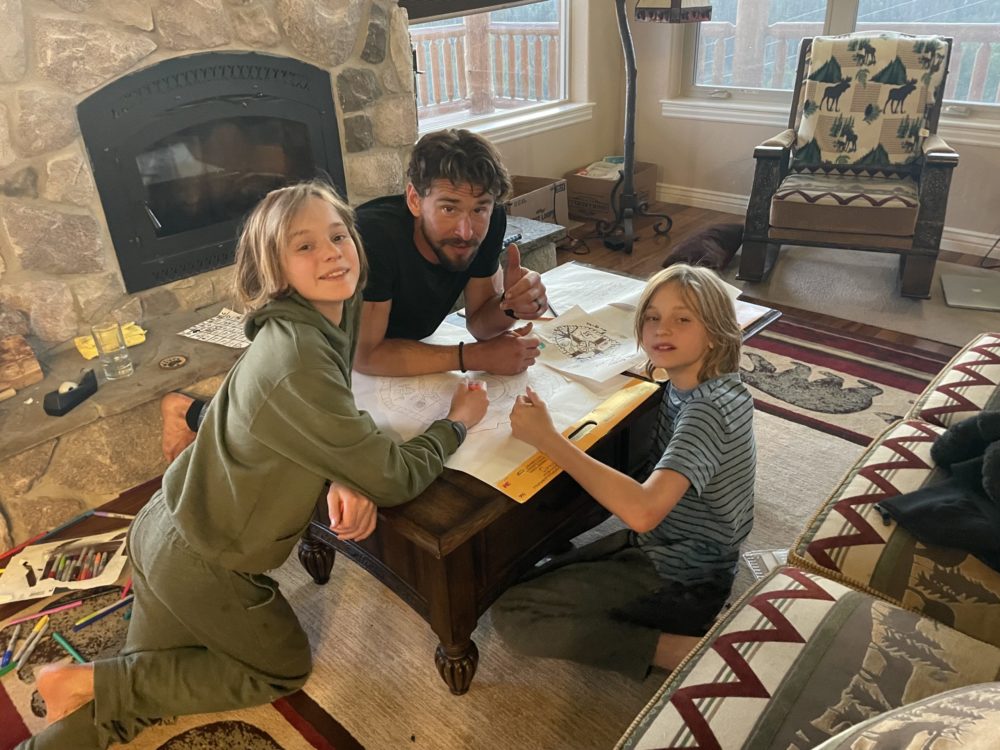 When it comes to creating and passing on family values, beliefs, and legacies to future generations, I believe that family traditions are the threads that bind a family together. Because of this, my family—myself, my wife Jessa, and my twin sons River and Terran—recently had a transformative experience working with Rich on building our Greenfield family legacy framework.
When it comes to creating and passing on family values, beliefs, and legacies to future generations, I believe that family traditions are the threads that bind a family together. Because of this, my family—myself, my wife Jessa, and my twin sons River and Terran—recently had a transformative experience working with Rich on building our Greenfield family legacy framework.
Rich founded a company called Legado Family, and he specializes in helping families not just to identify their core values but to create everything from memorabilia, traditions, rituals, and routines, based on those values. In a nutshell, as a former business branding expert, he helps families to “brand” themselves and create a family playbook and legacy in a similar way that a highly successful and organized corporation might.
As a result of working with Rich, we have a Greenfield family playbook that we can pass down to future generations—a playbook that contains everything from our family mission statement, traditions, important rites of passage at different ages for our kids, and our family values to our individual spirit animals, logos and colors! Not only that, but together we designed a beautiful family crest that's hanging above our fireplace (more details and photos here), we have a family mission statement prominently posted in our living room and in the dining room, and we have hats and shirts, mugs, and stickers with our family logo. We even have spirit animals and colors for each member of our family. It's pretty darn cool.
If you're not already weaving traditions, rituals, routines, and an emphasis on legacy into your own family, I encourage you to do it or to at least start down the road. I thought it was something I could figure out on my own, and while I'm not saying that you can't, after I met Rich I realized I was an amateur. If you can work with a professional, the process—and therefore, the results—will have significantly more weight and meaning.
Through Legado Family, Rich Christiansen has perfected a method of walking families through legacy-building. I recently spent a few days with Rich at his cabin in Utah while working with Legado, and as I mentioned above, I also hosted him as a guest on my podcast—and he's the real deal.
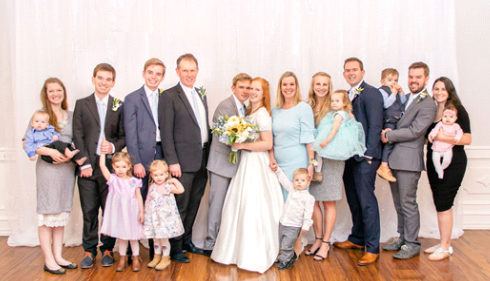 Rich and his wife, Gaye, started out 27 years ago in a small town with little more than $500 to their names. When they started seeing financial success in business, instead of filling them with a sense of security, it terrified them. One of the most important values Rich and Gaye agreed on was that they wanted to raise non-entitled children. So when money really started coming into their lives, the Christiansens stopped to ask: how will this impact the family mission statement? Will this affect the way the kids are raised?
Rich and his wife, Gaye, started out 27 years ago in a small town with little more than $500 to their names. When they started seeing financial success in business, instead of filling them with a sense of security, it terrified them. One of the most important values Rich and Gaye agreed on was that they wanted to raise non-entitled children. So when money really started coming into their lives, the Christiansens stopped to ask: how will this impact the family mission statement? Will this affect the way the kids are raised?
Those questions led Rich to create his own model to prioritize the values he and his wife wanted in their family and provide a positive influence for raising a tight-knit, non-entitled family. The Christiansens never intended to market this model. But as time went by, Rich saw the positive impact it had on his family and felt called to share this knowledge with other families, which resulted in Legado Family.
My family was among the first to go through this process with Rich. Myself, Jessa, and my twin sons River and Terran participated in a one-on-one weekend with Rich to establish our family symbols, traditions, doctrine, rites of passage, and structure. All of these concepts link back to the values that were the basis for the Greenfield family.
In this article, Rich Christiansen will walk you through the foundation of the Legado Family method of legacy-building. Whether you decide to work with a professional or not, I highly encourage you to consider taking time this year to clarify and formalize what's important to your family, both for now and for generations to follow.
The Infinite Entrepreneur
A central Legado Family philosophy is to leave things better than you found them.
It's so important to leave your kids with more opportunities, a better life, and a strong moral compass.
Often, this means taking a look at your current values and reviewing what’s serving you and what you can dispose of. Not only will this solidify your family's bonds even further, but it will create a secure legacy that’s easier to pass down the line. Your family will get stronger with time.
When you start to ponder leaving a legacy, you must always be thinking about the big picture—think about the decisions you make and how they can affect your present and future. This reflection is something that Legado calls the Seven Generations Concept. My friend Scott Ford, co-founder of Legado Family, introduced this idea that originated in the Iroquois Nation. The Seven Generations Concept means that anytime you’re making a decision within your family, you should think about how this would reflect three generations back, how it will affect your present day, and how it could impact three generations moving forward.
 Your future happiness is linked to the intentions you set now. If you’re stressed, bouncing around between maintaining your business, keeping your family happy, and spending time with friends, all while trying to maintain a healthy lifestyle, it’s difficult to find balance and harmony in the things you enjoy. Overwhelm is natural, but how do you find order in the chaos?
Your future happiness is linked to the intentions you set now. If you’re stressed, bouncing around between maintaining your business, keeping your family happy, and spending time with friends, all while trying to maintain a healthy lifestyle, it’s difficult to find balance and harmony in the things you enjoy. Overwhelm is natural, but how do you find order in the chaos?
The Legado Family answer is to become an infinite entrepreneur.
An infinite entrepreneur is about finding balance in four different parts of your life:
- Business
- Values
- Life
- Wealth
When you’re attending to these four components equally, your life is in balance. If one component takes over, certain parts of your life will suffer. For example, if you're working 60 hours a week, your relationship with your family and friends is likely to deteriorate. Or your health may get pushed to the sidelines.
The Legado Family Framework helps you to create this balance in your life. It exists in the form of the Build Family Legacies Program. There are six different sections you complete throughout the program in order to organize your family, values, and legacy. I'm going to talk about each of the six steps briefly here, and as you read through, you can think about how you might walk your family through this process either on your own or with the help of Legado's program.
There is value in reading this overview and beginning to think about each of these six components as they relate to your family now and what you would find value in defining for legacy-building. The six steps, of course, are worked through in-depth in the program, and with Build Family Legacies you are also provided with an interactive workbook, conversation cards, a family journal, templates, and prompts along with the video modules—all of which enhance the process.
Step 1: Establishing Your Family’s Foundation Through Values
This is the first step and the most important. Without guiding values, it’s difficult to set the path for your family’s financial, economic, and social success. If you take a moment to think about it, well-known institutions all have values, morals, and ethics they aspire to abide by. For example, one of Ben’s family values is to not purchase processed foods or items. The Greenfields believe in living an all-natural lifestyle, and this is a guiding value in their family. It’s an essential part of who they are.
Another important part of this step is relinquishing values that aren’t suiting your family. Just because your parents or your grandparents did something a certain way, doesn’t mean it will match what your family should be prioritizing in the present day. When your values are established, you can move forward with the next five steps with more clarity and purpose.
Step 2: Indicate Your Family’s Symbols
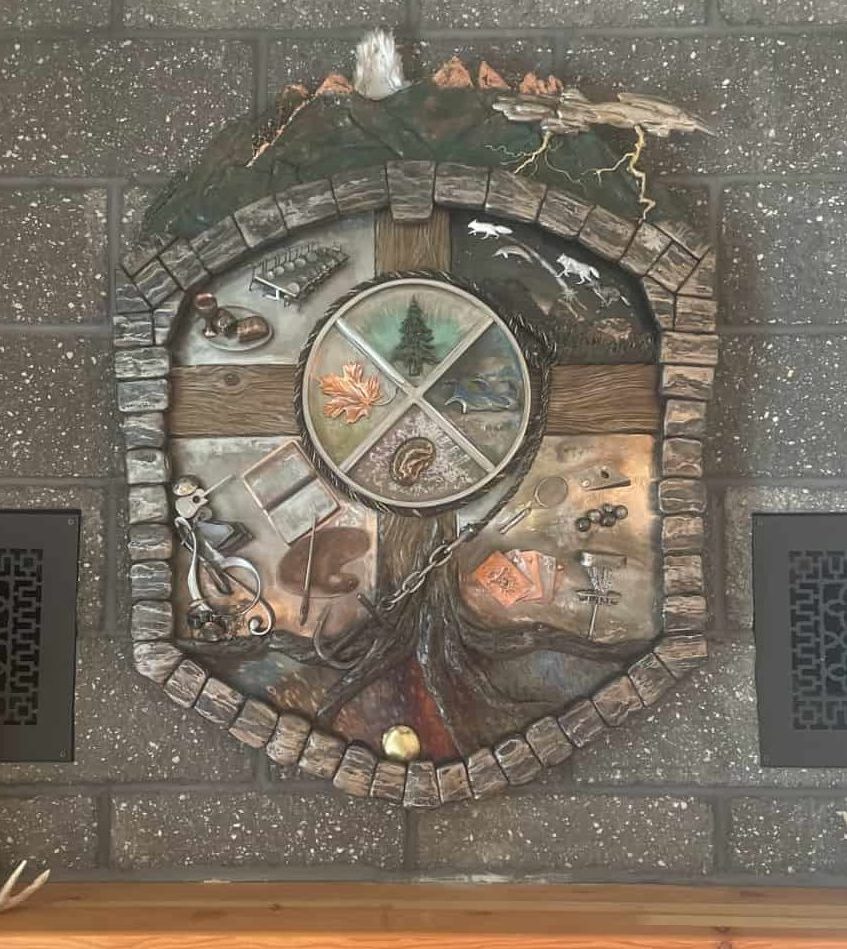 Now that you’ve established your family's foundational values, you can move on to creating your family symbols. What this means is coming together as a family and choosing colors, icons, and visuals that represent who you are as a family. Every member has a say in the colors, animals, and shapes that represent your family. This engaging exercise can be found in Module Two of the Build Family Legacies Program.
Now that you’ve established your family's foundational values, you can move on to creating your family symbols. What this means is coming together as a family and choosing colors, icons, and visuals that represent who you are as a family. Every member has a say in the colors, animals, and shapes that represent your family. This engaging exercise can be found in Module Two of the Build Family Legacies Program.
Creating symbology for your family may sound strange, but think of sports, gangs, universities—they all have logos that associate with the institution they represent. If you’re a part of a football team, you wear a jersey with your team symbol and colors. It’s part of your identity! Why shouldn’t families do the same? These metaphors create unity in the family, bringing you closer together and building stronger bonds.
Check out more details on Ben’s family crest here, built by Jacob Dean and outlined and created while working with us. It perfectly embodies their family values.
Step 3: Solidify Your Family Doctrine
Once you have your values and symbols established, you can move into creating your family doctrine. “Doctrine” may sound intense, but it’s really just a compilation of your ideals in written form. This can include a family slogan, mantra, mission statement, or a family framework. It’s the rules of engagement, or what it means to truly be a member of your family. An example could be how you set goals or yearly themes that are linked back to your original family values.
Ben and his family even created a “Greenfield Family Playbook” that outlines their doctrine and how to live as a person in their family. This playbook will be a guide that the Greenfield family can pass on to future generations in which all of their values and traditions are listed. (Ben and I talked more about the playbook when I appeared on this episode of his podcast.)
Step 4: Specify Your Family Traditions
Everyone has traditions. Big or small, they’re the bonding practices that bring us closer to the people we do them with. Traditions are the moments that last a lifetime. Children, in particular, love traditions as they give a sense of routine, stability, and closeness that is so important when you are young.
There are two types of traditions I want to point out:
- Cadences of comfort: These are the small, everyday actions that play a huge role in your routine and rituals. An example of this would be driving your kids to school or tucking them into bed every night.
- Deep-rooted rituals: These are important traditions that are almost ritualistic in nature. This could be something like the Jewish tradition of a Bar Mitzvah.
Regardless of the tradition, these consistencies are essential building blocks for your family. From a young age all the way to adulthood, they shape and form your family life. You are probably already incorporating traditions into your family life, even if you're not identifying those actions as traditions. For example, even ordering pizza on Friday nights can be a tradition. Clarifying a list of traditions and committing to continue to practice those traditions will go a long way in solidifying your family bonds.
Step 5: Getting Clear On Your Family’s Life-Defining Events
Life-defining events, which you may also know as rites of passage, coming-of-age ceremonies, or even initiations, are moments in childhood, teenage years, and young adulthood that influence and shape us into individuals. They are also the moments that provide valuable lessons or skills and are the tipping points into the various chapters of life. To get some ideas on life-defining events you can create in your family, sign up for the free handbook we've created at Legado.
A more personalized event might be something like a regular family reunion or a planned trip for your child’s 14th birthday. The common factor between formal and personal events is the ceremonial aspect. What makes a life-defining event so life-defining is that it is special. It stands apart from a regular day and is treated with a degree of reverence and care, even ritual, that mark it as a once-in-a-lifetime occasion to be remembered.
When Ben and his family went through the Build Family Legacies Program, they determined that one of their life-defining events would be when their kids turn 13, they would go out into the wilderness, visit a sweat lodge, and perform a fire ceremony. While this may not be what other families would choose, this rite of passage is deeply rooted in the Greenfield values.
Step 6: Bringing it All Together with Your Family Structure
This is the last key component that wraps everything together: establishing your family’s financial structure. Now that you understand what your family values are, you can conquer the financial aspects of passing down your legacy. This includes concepts such as creating a family office, establishing a family bank, and writing a family constitution. It’s about assembling the team you need to secure your financial future and pass on your wealth to your kids and future generations.
Summary
My dedication to optimizing my mind, body, and spirit is not only for the sake of feeling good.
It also allows me to be the best version of myself for my wife and my sons and to fulfill my purpose statement in life, which you can read more about here.
Through Rich's Build Family Legacies Program, I have realized the importance of connecting with my wife and sons to create a more meaningful family life with traditions, values, and structures that will last generations.
So here's a recap of the six-step protocol for building a strong and virtuous family legacy:
- Establish your family's foundation through values, which means having a strong foundation that sets the path for your family’s financial, economic, and social success.
- Indicate your family's symbols by choosing colors, icons, and visuals that represent who you are as a family.
- Solidify your family doctrine with rules of engagement, or what it means to truly be a member of your family.
- Specify your family traditions, or the bonding practices that bring you closer together.
- Understand your family's life-defining events. This could be rites of passage, coming-of-age ceremonies, or even initiations.
- Build your family structure, which means assembling your team, creating a family office, establishing a family bank, writing a family constitution, etc.
Constructing a family legacy is more than leaving an inheritance; it’s about passing on your values and traditions while also creating a solid financial future for your family. If you’re interested in learning more about Legado Family’s programs and free resources, you can visit legadofamily.com.
What are your thoughts on building a family legacy? Have you carefully thought out what your family means to you or how you can give your family legacy purpose to prosper in the future? If you've built your family legacy already or are thinking about doing so after reading this article on how I did so, leave your comments, questions, etc. below. I read them all.

